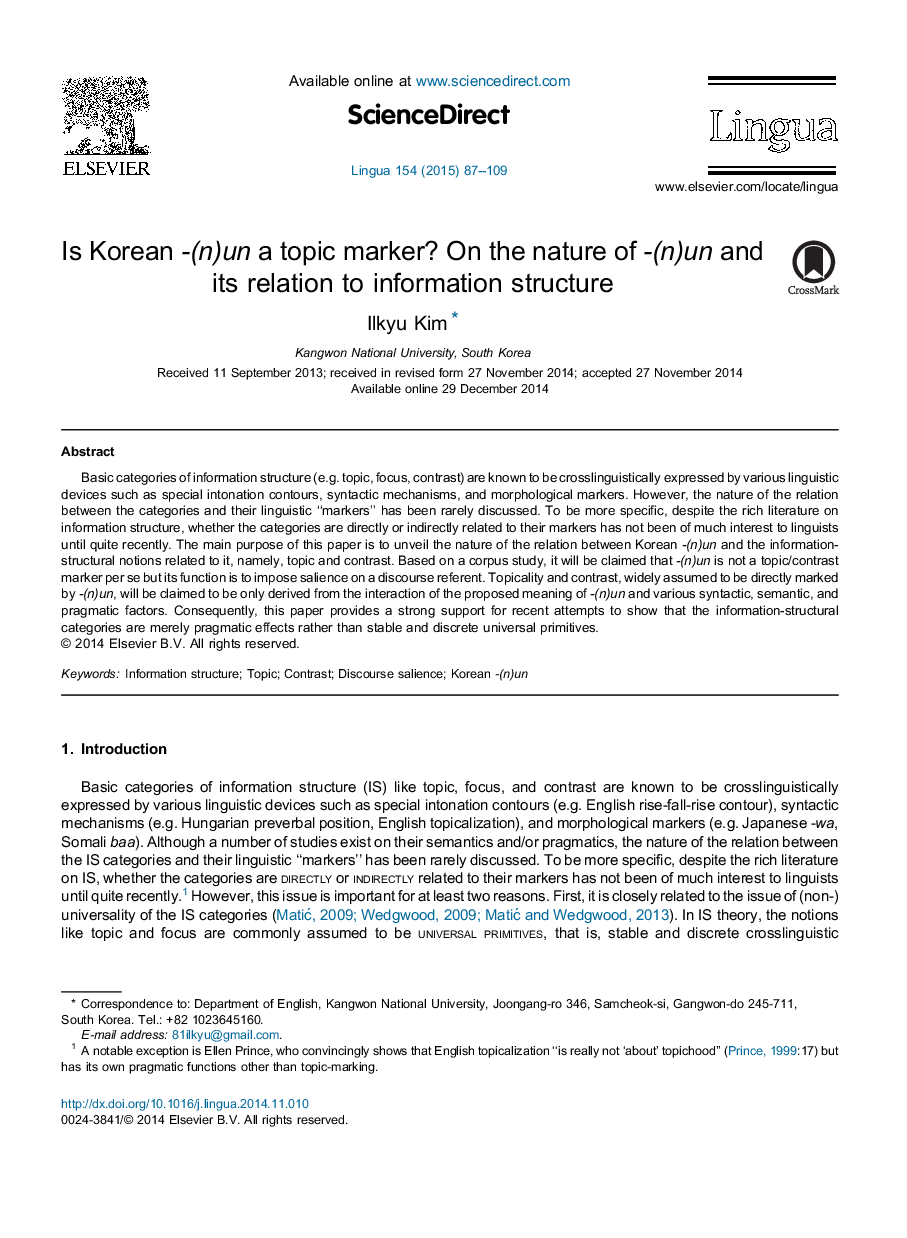| کد مقاله | کد نشریه | سال انتشار | مقاله انگلیسی | نسخه تمام متن |
|---|---|---|---|---|
| 935417 | 1475056 | 2015 | 23 صفحه PDF | دانلود رایگان |

• The standard view on Korean -(n)un is to see it as a topic and/or contrast marker.
• -(N)un is not a topic/contrast marker per se.
• The function of -(n)un is to impose salience on the meaning of a -(n)un-marked element.
• Topic and contrast are not universal primitives but merely interpretive effects.
Basic categories of information structure (e.g. topic, focus, contrast) are known to be crosslinguistically expressed by various linguistic devices such as special intonation contours, syntactic mechanisms, and morphological markers. However, the nature of the relation between the categories and their linguistic “markers” has been rarely discussed. To be more specific, despite the rich literature on information structure, whether the categories are directly or indirectly related to their markers has not been of much interest to linguists until quite recently. The main purpose of this paper is to unveil the nature of the relation between Korean -(n)un and the information-structural notions related to it, namely, topic and contrast. Based on a corpus study, it will be claimed that -(n)un is not a topic/contrast marker per se but its function is to impose salience on a discourse referent. Topicality and contrast, widely assumed to be directly marked by -(n)un, will be claimed to be only derived from the interaction of the proposed meaning of -(n)un and various syntactic, semantic, and pragmatic factors. Consequently, this paper provides a strong support for recent attempts to show that the information-structural categories are merely pragmatic effects rather than stable and discrete universal primitives.
Journal: Lingua - Volume 154, January 2015, Pages 87–109